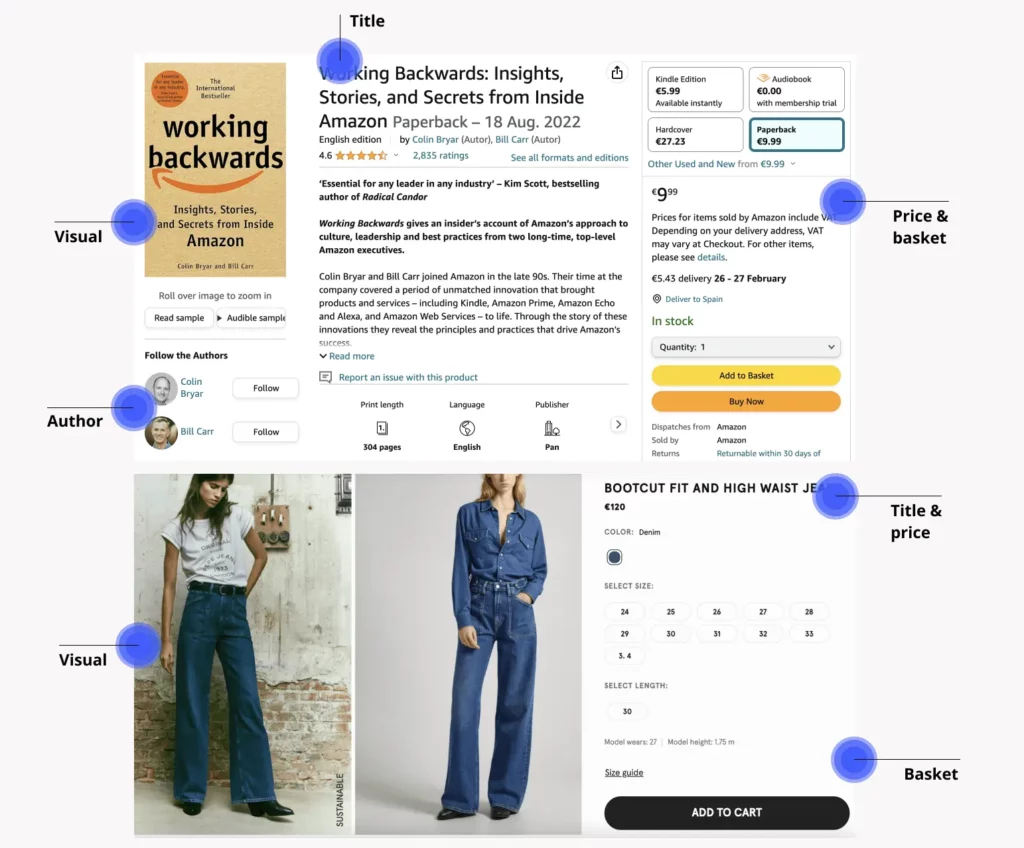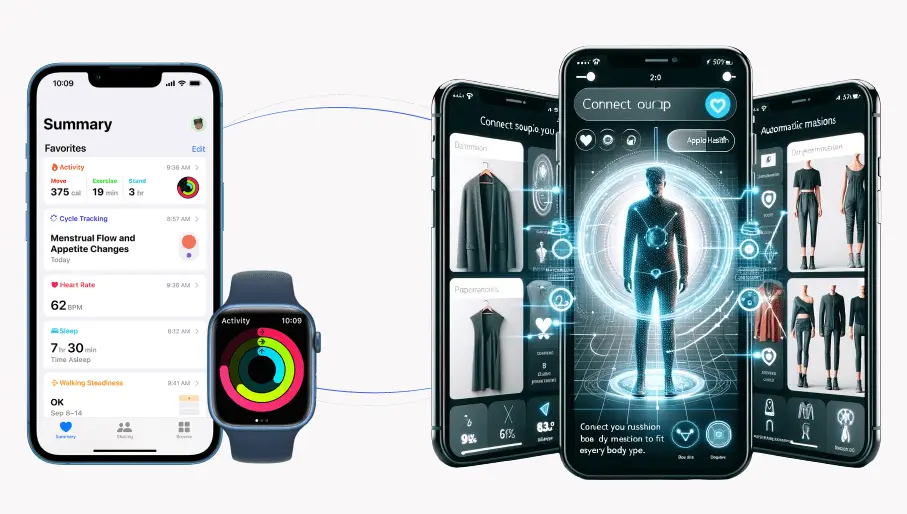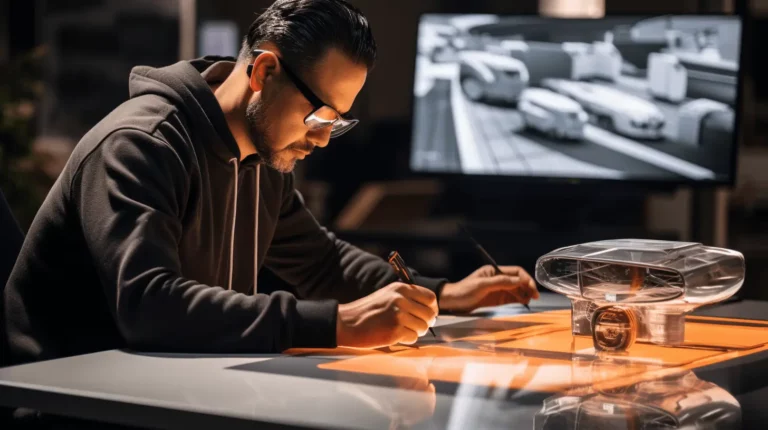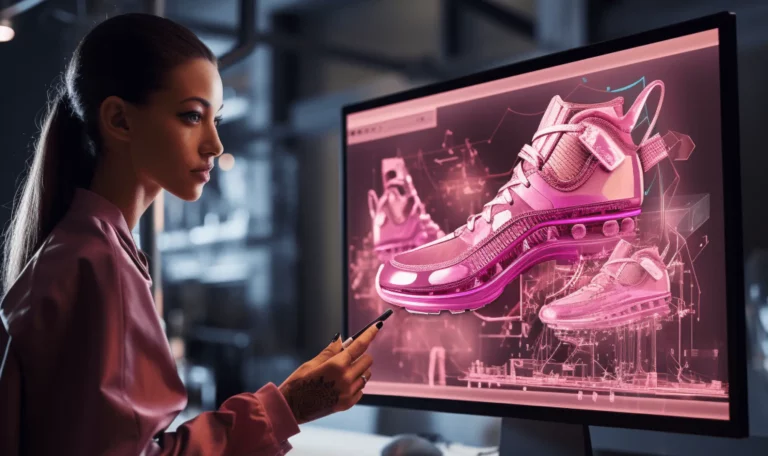The opportunity to revolutionize online shopping

Head of Circular Fashion at Mooflare

Principal Business Designer
- E-commerce is great for books, horrible for apparel
- Is the e-commerce sphere seems to be trapped in a time capsule?
- We’re thinking about the metaverse all wrong
- Imagining a more premium online brand experience for shoppers
- The digital fitting enabling e-commerce of tomorrow
- Bridging the gap between vision and realization
Top-tier brands have the opportunity to revolutionize their online shopping experiences.
E-commerce is great for books, horrible for apparel
When you step into a Louis Vuitton store, you're treated to champagne. It's luxury epitomized. Yet, online, Louis Vuitton and H&M feel strikingly similar. Why isn't the digital realm capturing this distinction?
Joshua Young
E-commerce transformed the way we shop, but we haven’t innovated the model in 25 years. That’s a problem, says Joshua Young, because our entire ecommerce infrastructure offers horrible brand differentiation for fashion brands. Why’s that? Well, it was built in the late 90’s based on Amazon’s bookstore model. Yes, we have better graphics and a smoother user experience, but the fundamental structures echoes that of a bygone era.
Think about it – books were structured by Title, Author, Subject and Price. It’s reduced clothing and apparel to just individual objects that can be transacted. But people don’t just want individual items – they want outfits, and they want discovery experiences that help them express their unique style.

Take a simple experiment that Joshua Young executed during a presentation. He showcased a series of men’s jeans listings from various top brands, with all logos removed. The challenge was for the audience to distinguish between them. The results were telling: even industry professionals from big brands struggled to differentiate their own product from each other. When revealed, brands as diverse as H&M, Louis Vuitton, Levis, and Old Navy turned out to be almost indistinguishable online, even though the physical in-store experience is dramatically different.
This exercise wasn’t just a playful game. It underscored a pervasive issue: the linearity and homogeneity of online brand experiences. As Young put it, “With all the technology we have…we haven’t created any way to differentiate from one brand to the next online.
Is the e-commerce sphere seems to be trapped in a time capsule?
We’re in an era where transformative apps like Snapchat can instantly alter our digital identities and platforms like Netflix stream cinematic masterpieces in 4K to our living rooms. Yet, the e-commerce sphere seems to be trapped in a time capsule. There lies an untapped potential, a “white space in the digital world” waiting for innovators to redefine the online brand experience.
Tiktok captured the hearts and attention span of younger generations by adopting this mindset. They pulled the carpet under the rug of social media giants like Meta and Twitter by immersing the user in video content, using algorithms and scrolling behaviors to drive recommendations (instead of profile-based segmentations) and enable people to play and create things. Meta and Twitter could have done this – Tiktok didn’t need a breakthrough in camera technology or internet speeds to achieve this.
The question then arises: why can’t online shopping echo this simplicity, interactivity, and delight?
We’re thinking about the metaverse all wrong

Ariana Grande’s iconic virtual concert in Fortnite wasn’t just entertainment—it was a glimpse into the future. However, brands often mistakenly translate real-world constraints into the limitless metaverse. Why replicate a physical store’s inventory limitations or spatial inefficiencies online? Young suggests, “The digital domain should amplify the brand essence, solving real-world shopping pain points and doing so with flair and fun. We’re ready for the gamification of shopping.”
But often, when these new technologies come out we end up thinking about them in linear terms, just copy/pasting today’s reality into the tool, and not leveraging its true capabilities.
When people first started thinking about what was the next generation consumer experience for e-commerce, everyone just pictured, "Oh, I'm going to take the metaphor of a real-world mall, recreate it in 3D, and that's going to be the metaverse." If you think about it, why take all of the physical limitations of an existing store and just translate it online? There are a lot of things that people don't like about stores.
Joshua Young
Imagining a more premium online brand experience for shoppers
In today’s world, shopping for clothing often involves sifting through racks of inventory, searching for the right size and style. This can be a frustrating and time-consuming process, especially when you’re not sure if a garment will fit or flatter your body type. But what if you could try on clothes digitally, in the comfort of your own home? That’s where generative AI comes in.
First, imagine walking into a virtual store and selecting your preferences, such as beachwear or red items for the beach. Instantly, all other irrelevant items disappear, leaving only a curated selection of clothing that meets your needs. From there, you can select specific items and see them modeled on a digital version of your body, complete with your unique height, body shape, and movements.
This process is not only convenient but also enjoyable. It’s like playing a game, where you get to see how different outfits look on your body and swap out items until you find the perfect fit. Plus, you can get detailed information about each garment, such as the type of material and its unique qualities. This creates a more interactive and immersive shopping experience that is tailored to your needs.
Moreover, this technology has the potential to revolutionize the fashion industry by reducing the amount of overproduction and waste. By enabling consumers to try on clothes digitally, brands can get a better sense of which designs and styles are most popular and adjust their production accordingly; perhaps even using a zero inventory sell-then-make model. This can lead to a more sustainable and equitable fashion industry that meets the needs of both consumers and the environment.
Generative AI has the power to transform the way we shop for clothes, by creating a more personalized, convenient, and sustainable experience. By leveraging this technology, brands can better understand their customers’ needs and preferences, and provide them with a shopping experience that is both fun and functional.
The digital fitting room enabling e-commerce of tomorrow
The key to unlocking this transformative future lies in collaborative synergy between the digital and fashion sectors. Singular endeavors will only scratch the surface.
What if, through digital advances like 3D simulation & modeling, consumers could virtually try product, ensuring perfect fits and reducing returns? There could be a future where secure body data storage, like Apple’s Health app, could be securely & seamlessly shared with vendors, ensuring optimal size recommendations.
The GenAI models can infer your exact measurements based on a photograph, especially if you're wearing close-fitting clothing. It does this based on millions of other models that look just like you and have a similar shape. So that's most likely how we're going to solve the problem of fitting people in the future. You just have someone take a photograph of you and feed it into the generative body solver, which will give you your measurements all around your body, including wrists and potentially even fingers so you'll know what size ring you should be wearing. It should be able to fully characterize you.
Joshua Young
And as the realm of AI expands, giants like Apple or Google could redefine product fit by creating standardized infrastructures for body data storage and sharing. This could enable virtual fitting rooms to get feedback on designs, before products are even manufactured. You could use this information to create clothing optimized for today’s bodies – sweat, heat, & performance.

Bridging the gap between vision and realization
Board of Innovation sits at this pivotal intersection, bridging the gap between vision and realization. We’ve championed innovation alongside giants like H&M, Levi’s, Pandora, and Walmart, and collaborated with digital powerhouses like Paysafe and ING. The untapped potential is monumental when these entities harmonize.
Brands that remain tethered to dated e-commerce models risk obsolescence. Those that embrace innovation will not only thrive but redefine fashion for the 21st century.
Are you ready to break the mold and lead the change? Get in touch and let’s get started.
Join us at our virtual Autonomous Innovation Summit to discover how AI is changing the way we innovate, operate and design – and how businesses can transform to thrive in this autonomous world.


